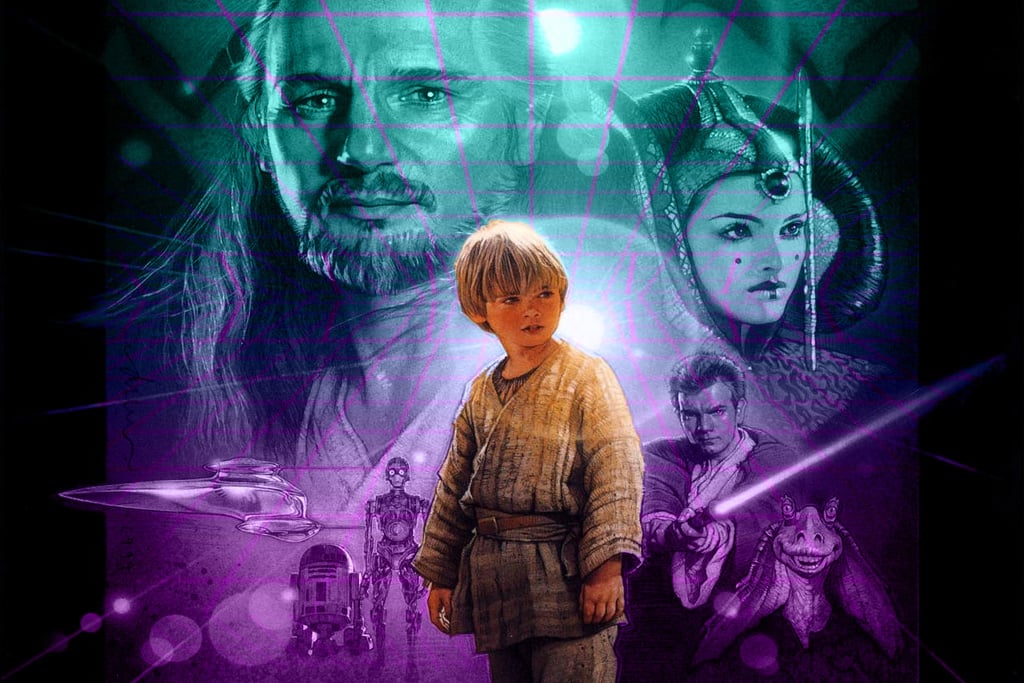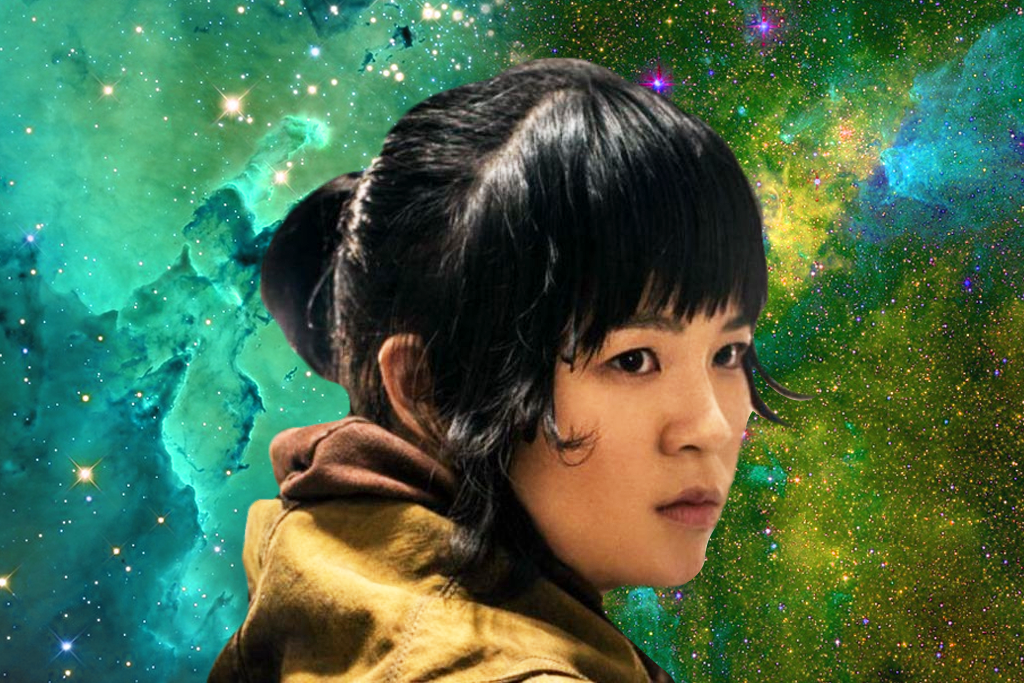‘Star Wars: The Phantom Menace’ Is To Blame For Modern Cinema Culture
Everything you hate on screen can be traced back to Jar Jar Binks.

A long time ago, in a cinema far, far away, I saw the midnight premiere of The Phantom Menace with my family. It was 1999 and I was nine years old.
Thanks to the marketing savvy around the twenty-year anniversary of Star Wars in 1997 (the trilogy now rebranded as parts IV, V and VI of a saga), I had spent two years watching the remastered versions of the originals on VHS.
Understandably I was hyped to see this movie.
And that excitement was palpable as we entered the cinema with hundreds of others, while Greater Union employees dressed as Stormtroopers served popcorn to those still waiting in line. This movie felt like THE event of 1999.
Two hours and 16 minutes later the credits rolled and I remember feeling… confused.
This was the first movie I had ever seen where I couldn’t say “I loved it!” afterwards. I felt like I hadn’t followed the story, I couldn’t relate to the characters, and I had the strong impression Jar Jar Binks was going to make an appearance in my nightmares.
The Phantom Menace went down in history as the most financially successful film of 1999, and the most disappointing. Twenty years on, whether you like this movie or not (although I’m pretty sure I know your answer), we can’t deny what a massive cultural moment this film’s build-up, release and reception were to a huge percentage of people.
So much of The Phantom Menace’s extreme hype and extreme criticism was just a taste of things that are now completely embedded in our cinema culture.
The Biggest Download Event In History
Back in 1998, the first trailer for The Phantom Menace showed us the beginning of the end. In November of that year, a teaser trailer for the movie playing before Meet Joe Black, The Siege and The Waterboy in North American cinemas had ticket sales skyrocketing as fans flocked to the cinema to see the trailer — then promptly left before the film even started.
Bootleg recordings uploaded to a pre-YouTube internet added to the fervour, and when the second official trailer was released on the official Star Wars website (lol the ‘90s) — it became “one of the biggest tests the internet has faced,” and according to Steve Jobs “the biggest download event in history” as it was downloaded over a million times in 24 hours.
These days we’re maybe not flocking to Marvel’s official website to wait for the newest trailer, but trailer hype is still very much a thing. We get teasers, trailers for trailers, multiple cuts of official trailers, embargoed trailer reviews and frame-by-frame analyses all working in harmony to get as many ticket sales as possible.
Trailer editors admit to “study[ing] fandoms of franchises every day, all day” for the best results, with some trailers now raking in literally hundreds of millions of views across social media in just the first 24 hours.
Jar Jar Binks Walked So Groot Could Run
The cringe is real if you re-watch the trailers now, but the CGI that now seems worse than a bootlegged copy of The Sims was pretty mind-blowing at the time.
While the original Star Wars films are praised for their practical effects, this new ‘prequel’ (even this word was popularised thanks to The Phantom Menace) was pushing limits for new ways of using computer visual effects. And sure, George Lucas’s vision exceeded what was realistically possible at the time, and sure, we have him to blame for going back and ‘remastering’ the original trilogy with the same hokey animation, but this was the beginning of complex characters who are 100% CGI.
I hate to say it, but without Jar Jar Binks, we wouldn’t have Gollum, Groot or Thanos. Make of that what you will.
Behind the scenes, these technologies in motion capture and green screen were being refined, but The Phantom Menace audiences had a hard time consolidating the real and the fake into a coherent visual narrative. Point in case: not only is Jar Jar Binks the actual worst because of a bad script and offensive racial stereotypes, but he physically looks weightless and stuck on top of the environment he’s meant to inhabit.
These technical shortcomings and an impenetrable storyline have made the film the centre of ridicule and disappointment for twenty years. As the saying goes: “no one hates Star Wars like Star Wars fans”, and this internet-facilitated tradition of tearing a Star Wars film to shreds, because it doesn’t conform to some vague nostalgia of what mega-fans think a Star Wars film should be continues into the 21st century.
Seeing all this love for The Phantom Menace brings warm feelings to my heart. Keep on sharing your retrospectives, articles, videos, podcasts and more. Two decades is more than enough to prove its worth as a valid, vibrant and crucial piece of the saga.
— Raising a Rebel (@RaisingaRebel) February 3, 2019
Merchandise, Baby
To add insult to the injury of this train-wreck film, it came with a truly astounding number of tie-in toys and other licensed paraphernalia, sold even before the film was released and banking on the assumption that the movie would kick ass.
This hard-core toyetic design of characters and extensive licensing of toys is now par for the course for big blockbusters, but it was criticised at the time for being a little too on the nose.
There were THIRTEEN distinct video games for this film alone, my local Target was flooded with action figures and plastic double-ended Darth Maul lightsabers, and I still remember the downright grotesque cups that I, for some unknown reason, wanted to collect.
I’m watching the Phantom Menace for the first time because I’m on muscle relaxers and nobody told me it’s like a James Bond movie in the Valerian universe
— irregular skeleton (@Merman_Melville) January 26, 2019
Standing Alone
However, the ultimate test for a movie, exemplified in the excellent podcast Blank Check, is this: If you didn’t know there were other films in this saga, or if you took The Phantom Menace as the first movie in this grand narrative, does it truly stand alone?
I don’t think so.
For new audiences, there’s simply not enough information to understand anything in this movie (IMDB lists “Trade routes? Taxation? What is going on at the start of this movie?” and “What exactly were the steps in Palpatine’s plot in this film?” at the top of their FAQ), and then for the die-hard fans, there’s unnecessary introductions like midichlorians.
The Phantom Menace is expanding on a story that doesn’t need to be told at all, because it was already so elegantly inferred in the original trilogy.
Combined with a weak and overcrowded script, we’re left with no tension or drama. I see a lot of similarities to Valerian, John Carter and Jupiter Ascending here — sci-fi operas planned with immense scope that end up with incoherent plots because they were so touched up and re-hashed in post-production in order to fit all the bits in, rather than starting out with a single clear vision.
watching The Phantom Menace is like having a weird dream where you watch a Star Wars movie
— blaine capatch (@blainecapatch) January 20, 2019
I wonder if this qualifier of a good movie — that it can stand alone — is even necessary for audiences today?
This issue frequently comes up when resurrecting beloved cultural IP from comics, books and movies. Mark Lawson wrote on this in 1999, claiming movie culture was becoming “tyrannically nostalgic, engineering the return of […] formative obsessions […] and imposing its infatuations on a new generation.”
We need never grow old, or risk venturing into new territory when nostalgia is generally a sure bet.
Nostalgia
This nostalgia continues as we see the shameless cash-grab of The Hobbit trilogy, endless Batman or Superman movies and Universal’s entire Dark Universe. Returning to a cultural ubiquity like this comes with a guaranteed social momentum which makes it so much easier to market a new film as part of an ongoing saga. You can rely on the dizzying high of a beloved cultural touchstone’s silver screen revival (like Indiana Jones), and then bet on the inevitable disillusionment of the loyal fan base upon delivery (seriously wtf was Indiana Jones 4).
A silver lining of this — if one must be found — is that these expanded universes and saga-scale narratives allow for ambitious and complex arcs over multiple films, where we start to see more nuanced ideas of good versus bad in blockbuster sci-fi.
Me, one drink: I love The Phantom Menace. There's a lot of nostalgia there, sure, but I truly enjoy it.
Me, two drinks: MY FAVORITE PART OF TPM NO SHUT UP MY FAVORITE PART IS WHEN QUI-GON BACKHANDS MAUL OFF THE PLATFORM AFTER HE HITS OBERS AND THE NOISE IT MAK*knocks over lamp*
— Jim does a Star War (@ObsKenobs) January 11, 2019
In this case I’m thinking of the dark and gritty Logan or even the whole Marvel Cinematic Universe, which allowed for group divisions and redemptions on an epic soap-opera scale. But then, these films left me feeling like I needed to ‘do my homework’ and watch 26 films before I could see Thanos snap his fingers.
1999 was the beginning of the era of needing to adjust our expectations about films that are part of these mega-sagas.
The Phantom Menace showed that films didn’t have to stand alone as a coherent work to be financially successful, and now participating in a complete buy-in to a cinematic universe is almost essential to our enjoyment of big blockbusters.
Note: With this all said and done, the costumes in The Phantom Menace RULE, the fight scene with Darth Maul at the end is awesome, and it’s nowhere near as bad as Attack of the Clones.
—
Hannah Jenkins is a writer, critic, and poet. She tweets at @hiijenks.
All this week, Junkee is heading back in time to relive the greatest moments in pop culture from 1999. For more 1999 content, head here.
